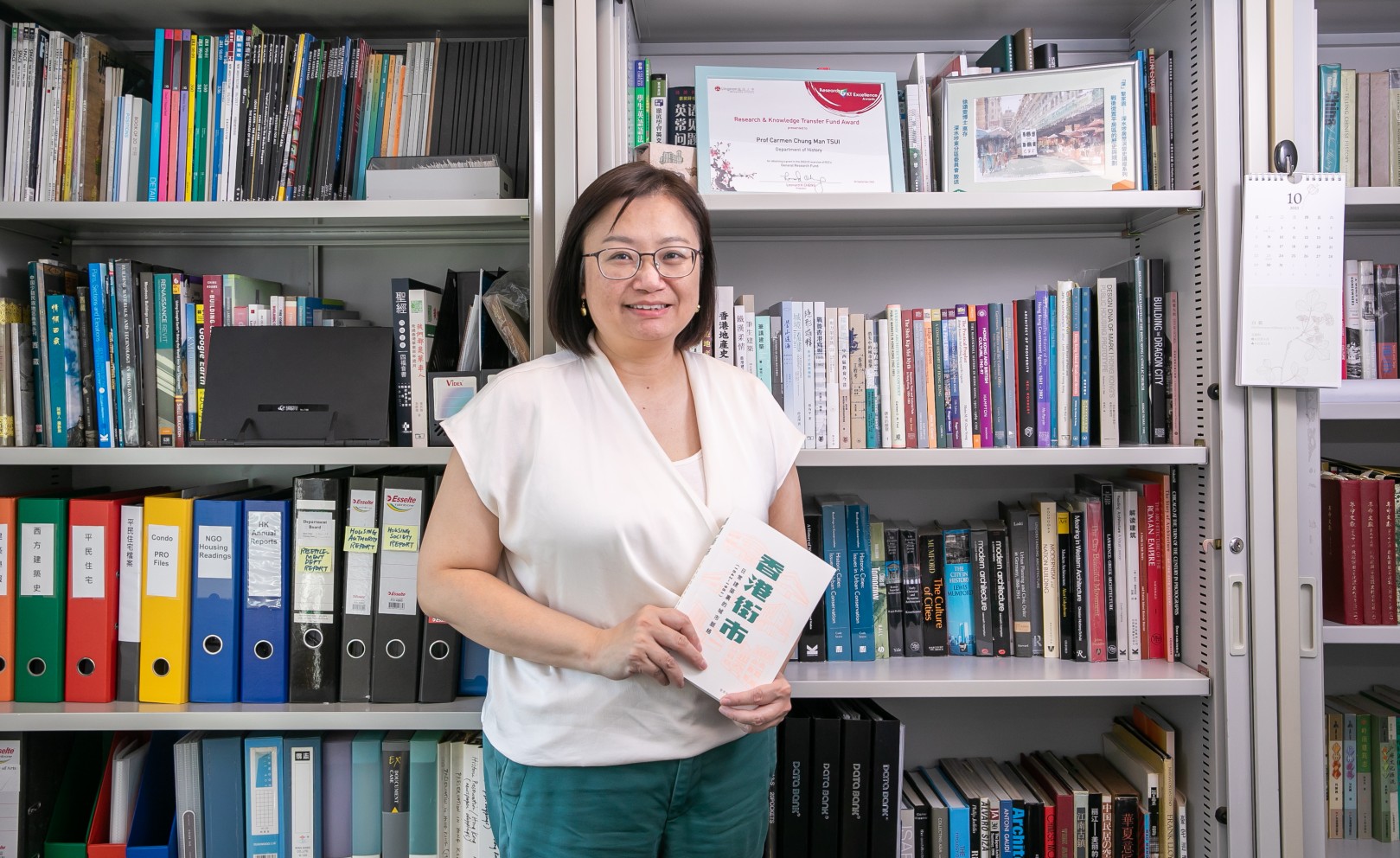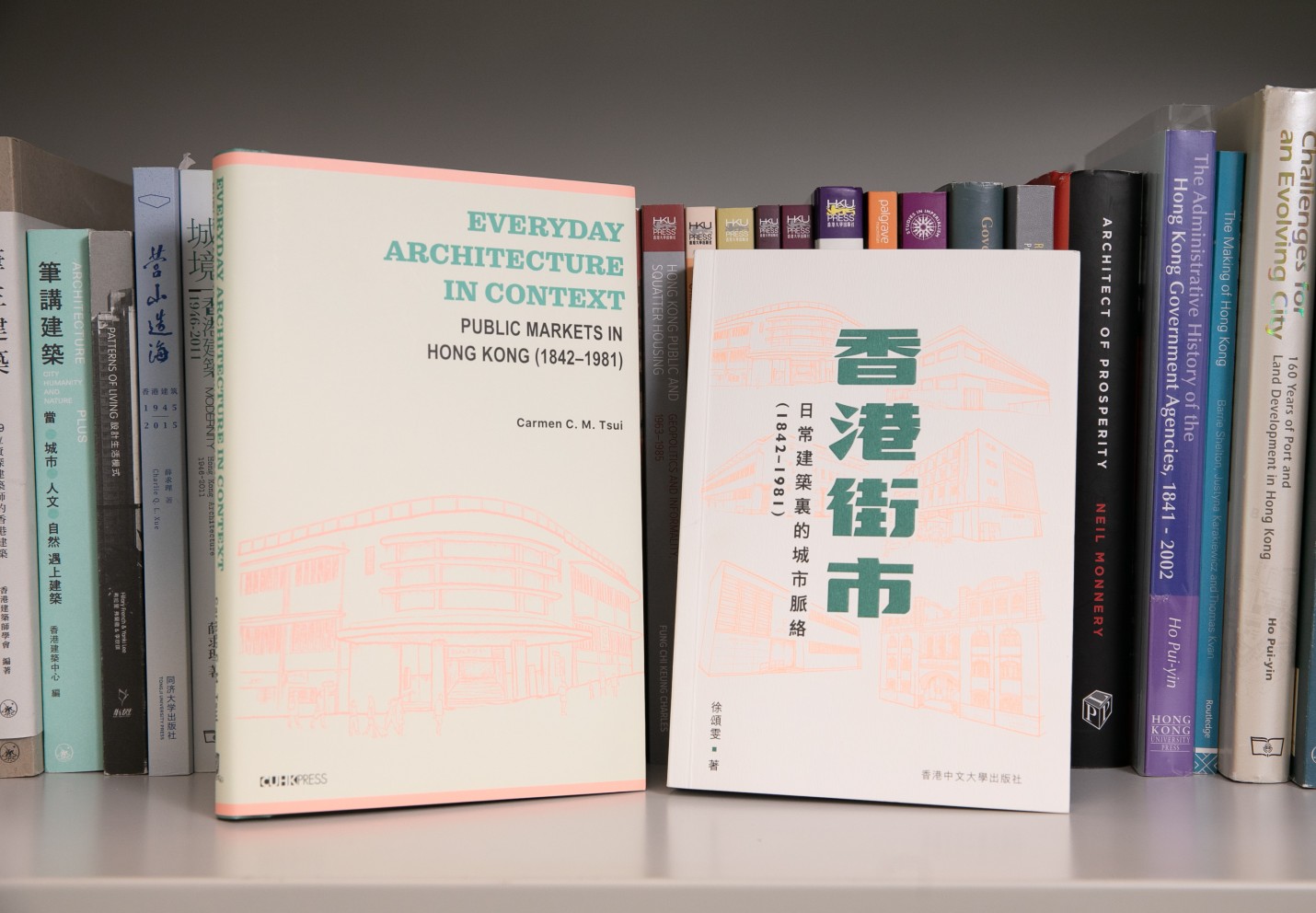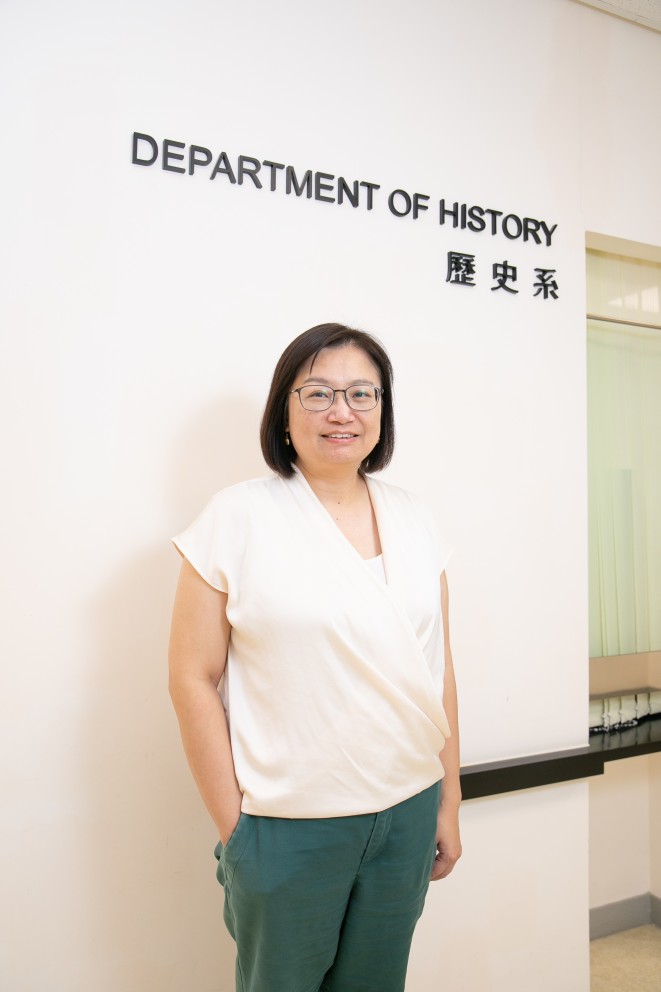A mission to write history: an interview with Prof Carmen Tsui

"We are all observers of history, and also a part of history. As a history professor, I feel very responsible for objectively recording and interpreting history for people here and now, and in the future."
Prof Carmen Tsui Chung-man, Associate Professor in the Department of History at Lingnan University, is an architect and urban historian. Her research paper on Mei Foo Sun Chuen, "Housing the Nascent Middle Class: the First High-rise Planned Community in Post-War Hong Kong", was selected as the Best Article on Global Hong Kong Studies in the Humanities by the International Convention of Asia Scholars (ICAS), and the Chinese Language Edition of her book Everyday Architecture in Context: Public Markets in Hong Kong (1842-1981) was shortlisted for the ICAS Book Prize 2023.
Mei Foo Sun Chuen was not only part of Prof Tsui's childhood memories, but also played a significant role in the history of Hong Kong housing. "Mei Foo Sun Chuen was Hong Kong's first high-rise planned community, and the world's largest private housing project at completion. It introduced a new planning concept, and offered comprehensive housing management and modern flat designs." It took 10 years to transform the area from a Mobil Oil Corporation oil depot into a large housing estate comprising 99 buildings, making it truly unique in Hong Kong.
The paper shows convincingly how a mega-scale residential development became the modern ideal for the middle class. Prof Tsui pointed out that the success of Mei Foo Sun Chuen even influenced the planning of large private estates like Taikoo Shing and Whampoa Garden.
When it came to data collection, newspapers and the correspondence between Mobil Oil Corporation and the government in the archives were valuable resources. Prof Tsui also collected oral histories by interviewing her friends’ parents, who were among the first people to buy units in Mei Foo Sun Chuen. These oral histories ensured the accuracy and reliability of her findings.

The English and Chinese editions of Prof Tsui's book, Everyday Architecture in Context: Public Markets in Hong Kong (1842-1981)
"History is experienced by all, but interpretations vary." Curious about how everyday architecture reflects the changing political, social, and economic needs of a city, Prof Tsui has also written a book on the history of public markets in Hong Kong.
"Why is the Old Wan Chai Market only rated as a Grade 3 historical building?" Prof Tsui emphasised that this building was a turning point in the development of government public architecture, which went from traditional British, such as Western Market, to Streamline Moderne. The materials and architectural aesthetics of the Old Wan Chai Market building had great symbolic value. So, feeling that the Old Wan Chai Market was undervalued, Prof Tsui decided to conduct a longitudinal study of public markets in Hong Kong. She believed that only by examining the development context of the entire market scene in Hong Kong could people truly appreciate the importance of a specific market.
"History needs to be written; otherwise, it will be lost." Prof Tsui encourages students to set down Hong Kong's past. Even if they cannot change the present, they can document things as they happen. The impact of every single word counts, and is hard to erase.


